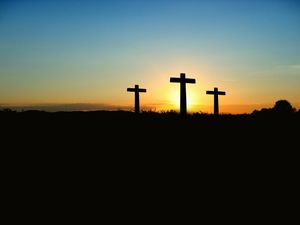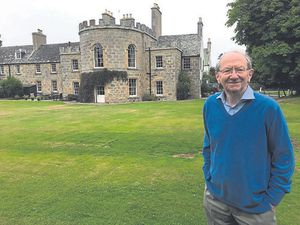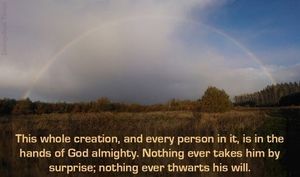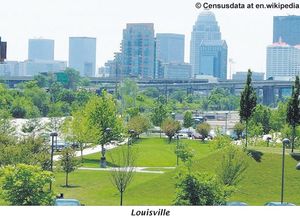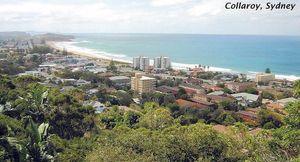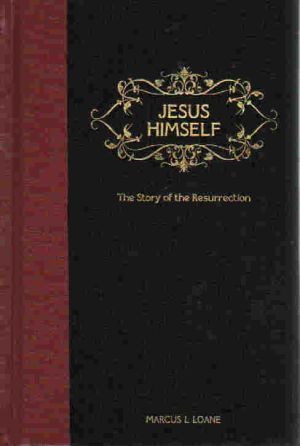On 23 April 1954, a student at Moore College, Sydney, was listening to a history lecture by Marcus Loane, being part of a series on Paul and Acts.
It was a day not to be forgotten by W. J. Lawton, who would later speak of the ‘breath-taking grandeur’ of the address and would add, ‘For the very spell-binding wonder of it all, there were times when you could take no notes. As Canon Loane expounded the doctrine of the unmerited grace of God, I committed my life to Christ’ (Blanch, pp. 356-7).
That same year, 1954, saw the publication of Loane’s book, Masters of the English Reformation, on the other side of the world in London. The reading of it would have the same effect among some young men in England as was known at Moore College. It opened a new universe of thought and feeling, inspired convictions, and remains in print today ‘as one of those books which communicates the writer’s enthusiasm to the reader, page by page’ (Timothy Dudley-Smith, in a foreword to the 2005 reprint by Banner of Truth).
Homiletic history
Loane was possibly the first prominent evangelical since J. C. Ryle to teach history with the primary aim of demonstrating the impact of biblical truth. As a previous biographer had observed, ‘Loane’s history was homiletic. It illustrated reformation and evangelical truth.
It was not history in the orthodox historian’s sense of history, but it cannot be denied it was a powerful vehicle by which Loane communicated his message’ (J. R. Reid, Marcus L. Loane, a biography; Brunswick East, Victoria, Australia: Acorn, 2004). Which is to say, that Loane regarded the Christian faith, both in Scripture and in history, as a message to be preached.
This was to be a characteristic of many of his books. Whether he is writing of William Tyndale or of men in more recent years, his interest was in writing something of importance for the gospel. He wanted his students and readers to be inspired with greater devotion to Christ.
This is a theme to which true Christians are inevitably drawn, and the many around the world who have benefitted from the Loane titles will surely want to see Allan Blanch’s beautifully produced and thoroughly researched new biography. The list given of Loane’s publications extends to six pages.
There will be readers for whom this volume will have particular interest. Allan Blanch is an Australian writing for Australians, so there is naturally more here relating to Australian life, schools and evangelicalism than found in books published elsewhere. But, if the non-Australian reader is occasionally lost in the narrative, it will not be for long.
Denominational loyalties
Another group for whom this book has special interest will be those who love the evangelical Anglican churchmanship maintained in the past by such men as Bishop Ryle, and which Loane sought to continue.
How denominational loyalties relate to the gospel has become one of the most vexed questions inherited from the last century and it created tensions in Sydney, as elsewhere.
Readers will form their own judgment on how far Loane remains an example to clergy in this area. The subject has particular relevance to those seeking to maintain the biblical and Protestant tenets of the Thirty-Nine Articles in the Anglican Communion today.
On this subject there was a measure of difference between Loane and his brother-in-law, D. B. Knox. Both men ranked evangelicalism above Anglicanism, neither endorsed the popular ecumenism, yet there were points of tension which are thought-provoking and which remain relevant (Blanch, pp. 353-55). Knox was Principal of Moore College, 1959-1985 (For Knox, see D. Broughton Knox, Select works, 3 vols., Kingsford, NSW, Matthias Media, 2000-06; Sent by Jesus, some aspects of Christian ministry today, D. B. Knox, Edinburgh: Banner of Truth, 1992).
Marcus Loane, born Tasmania in 1911, was brought up in Sydney, where he studied at the King’s School. Raised in a Christian home, his commitment to Christ had been definite from the age of 14.
In recalling his youth, he noted how, during a week in which illness confined him to bed, he read J. C. Ryle’s Expository Thoughts on the Gospel of John: ‘It was the first commentary I had ever tried to read and it soon absorbed my mind and heart so completely that I could not put it aside. I know now that I read those two well-bound volumes at a time when a great hunger for truth had gripped my heart’ (Blanch, pp. 36-7).
This incident was probably when he was 18. About the same period, his spiritual life and ambitions were affected as he sat under the ministry of a Free Church of Scotland preacher from the Scottish Highlands, Rev. George Mackay, of whom he wrote: ‘I will never forget the sense of awe, the deep reverence, the solemnity of his preaching. His ministry left a lasting mark on my life’.
Christian ministry
Mackay was preaching in Sydney in 1929, which was the year Marcus entered Sydney University. At that time he was sensing a call to the gospel ministry, which led him on to Moore Theological College to train for the ministry of the Anglican Church in Australia.
From there he moved on to assist in the Sydney parish of David James Knox, to whose counsel and friendship he owed much. The Australian Dictionary of Evangelical Biography,under ‘D. J. Knox (1875-1960)’, notes, Knox ‘was a constant user of the Bible, emphasising the doctrine of grace, rejoicing in the Reformation, promoting the evangelical cause’.
Loane’s debt included the hand of Knox’s daughter, Patricia, ‘the greatest prize I ever won was the heart of the noblest girl I ever knew’. A month after their wedding (December 1937), they sailed for a year in England, paid for by the bride’s grandmother who believed ‘people were not really educated until they had been to England’ (Blanch, p.66).
Certainly the twelve months in England and Scotland left a permanent impression and brought friendships which would be lifelong. One of these was with Dr Douglas Johnson, the general director of the Inter Varsity Fellowship, who was already a key behind-the-scenes figure in evangelical history.
Johnson commented that his first impression of Loane was of ‘his over-gentle presence’, an opinion later retracted: ‘Never had I been more wrong in judging a character … he displayed courage and firmness and resolution at each point in his increasingly responsible positions’ (Blanch, p.374).
Loane’s first desire was to serve as a parish minister. This was overruled by Howard Mowll, Bishop of Sydney, who had ordained him and wanted him as a chaplain and tutor at Moore College. To that position Loane had returned in 1940, but not for long. Australia was at war, her very survival in question, and by 1942 he was a chaplain in the army.
Army chaplain
That same year his brother was to be killed serving in the Air Force. Loane’s army service was not at some base or headquarters far back from the front line. He lived and endured among the infantry in all manner of conditions, amid the jungles and mountains of Papua New Guinea, and close to some of the most bitter fighting of the Second World War.
At one point we read that in five months he moved, chiefly on foot, ‘2,500 miles, made ten crossings of the Owen Stanley Mountains and held exactly one hundred services for Australian soldiers or Christian natives’ (Blanch, p.79). ‘Individual ministry’, he noted, ‘has had to give place to the ministry of preaching’.
Soon after his enlistment, he had hearers of a very different type from those of a north Sydney parish and wrote: ‘They are a very decent lot on the whole, but utterly devoid of spiritual light or life … fed on the idea that the sacraments are the be-all and end-all of the Christian life … I have had the joy of leading one lad to Christ’.
His character gave him openings he would not have otherwise had. One who served with him afterwards wrote: ‘You were accepted by the men as one who could have claimed privileges but never did so. You carried your own heavy pack backwards and forwards over that terrible trail and refused all help’.
Moore Theological College
In 1944 he was called back to Sydney and to the succession of responsible positions which the following years would bring. In his time as Vice Principal (1939-53), and then Principal (1954-59), Moore College regained its biblicism, which had slipped in the early 1930s.
He worked closely with Archbishop Mowll — ‘the one person on whom he had always leant with the most absolute confidence’ — and whom he described as, ‘in every sense a big man, with a big voice, and a big heart’.
In 1958, Mowll consecrated Loane, aged 46, as a bishop, and being in poor health Loane was to attend the Lambeth Conference in his place. In 1966, Loane became Archbishop of Sydney. He was knighted by Queen Elizabeth in 1976 — welcoming her to Sydney on her fifth visit, the following year — and appointed Primate of Australia in 1978.
At the age of 70 he laid down his church offices, while approving the words of the aged Charles Simeon, ‘I seem to be so near the goal that I cannot but run with all my might’.
He was given a long last lap. Until his death in 2009 at the age of 97, he continued to serve the cause of Christ in quieter ways. The prayer of Robert M’Cheyne might have been his own, ‘I long for love without any coldness, light without dimness, and purity without spot or wrinkle’.
We are thankful that Canon Blanch’s biography will carry the memory of this great and good man for the benefit of others in future days. There is much preserved in this volume which would otherwise have been lost. The human side of the man is not omitted, and one cannot miss the physical strength which was given to Sir Marcus. A classmate at school, recalled how, at the age of 12, ‘when it came to wrestling, none of my friends could put me on my back more quickly or expertly than he’.
He was an early riser, and, when he became Principal at Moore, he did not require the daily procedure which had helped his predecessor (T. C. Hammond). In the former era, a student had the duty of standing below the open window of the Principal and calling, ‘Are you awake, sir?’ The first day this was repeated after the installation of the new principal, we read, ‘There was a wordless response. Through the open window of the principal’s residence a bucketful of water cascaded down, narrowly missing the student below. The old pattern ceased that day’ (Blanch, p.134).
Faithful minister
The ‘woe’ belonging to those of whom all men speak well did not belong to Loane. As Peter Jensen mentioned in his tribute at a thanksgiving service (13 May 2009), ‘The archbishop was described by other Anglicans as a “narrow fundamentalist”.’
Others thought that his theological reading had not kept pace with the times. When Pope Pius VI came to an ecumenical service in Sydney in 1970, Loane was the one church leader unmistakably absent. He had declined the invitation on the grounds, ‘I am convinced that until there is an agreed doctrinal confession, any get-togethers of this kind only increases the elements of disunity’ (Blanch, p.244).
The truth is he was a Protestant archbishop in an age which had come to believe that differences between Rome and Protestantism were of little consequence.
As Archbishop Jensen concluded in his tribute: ‘He was godly, he was courteous; he was a man amongst men … He was a man of the Bible…
‘He seemed so strong; it was as if he was indestructible and that death could never claim him, that his comforting and guiding presence would be virtually permanent. But he knew better; he never thought that any accomplishments were through human strength. He is gone. We thank God for him, and we thank God that his witness remains’.
Iain H. Murray has engaged in extensive pastoral and international conference ministry for many years. He has authored many books that are published by the Banner of Truth, of which trust he was a co-founder. This article first appeared in the Banner of Truth magazine, January 2016, and is used here by kind permission.


